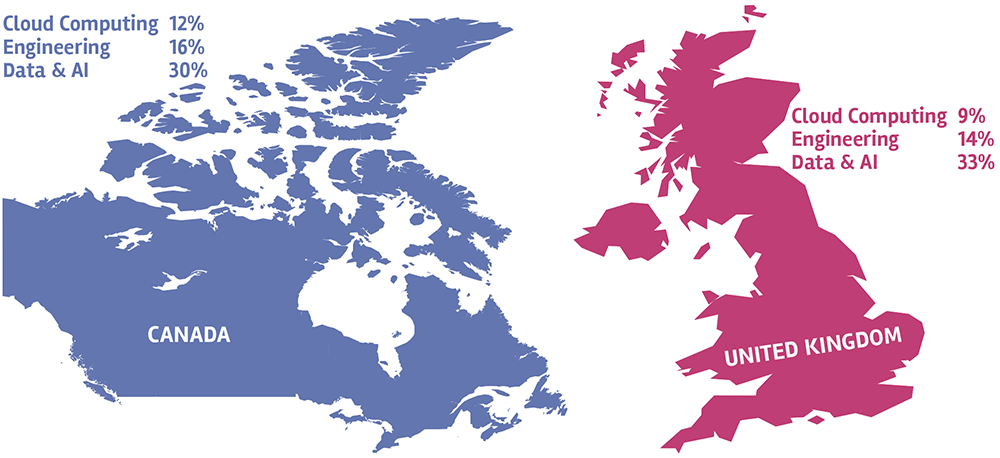The Society of Women Engineers saw members from more than 40 countries at its 2021 hybrid conference. Acknowledging the equity issues that exist across geographic borders, we draw attention to the gender gaps that exist in the engineering and technology sectors across several countries where SWE members live and work.
By Roberta Rincon, Ph.D., SWE Associate Director of Research
The World Economic Forum (WEF) released its Global Gender Gap Report for 2021 last March. It was the 15th year that the WEF has reported on gender-based gaps across four dimensions:
- economic participation and opportunity
- educational attainment
- health and survival
- political empowerment
The organization tracks more than 150 countries on their progress toward closing gender gaps in these areas.
FEMALE REPRESENTATION IN THE ENGINEERING AND TECHNOLOGY WORKFORCE IN SELECT COUNTRIES AROUND THE WORLD
Globally, the gender gaps in educational attainment and health and survival have nearly closed, but women’s representation in leadership positions persist, both in government and in the workplace. Data in the WEF report are prior to the COVID-19 pandemic, which SWE research and other researchers are finding has had a greater impact on women than on men. We anticipate seeing an increase in the economic gender gap in next year’s report.
According to WEF’s latest reports, the jobs of tomorrow center on eight distinctive job clusters, three of which support the development of emerging technologies: cloud computing, engineering, and data and artificial intelligence. The global gender gap in these fields is particularly concerning, with female representation just 14% in cloud computing, 20% in engineering, and 32% in data and artificial intelligence.
STEM workforce data are not included in the WEF report for several countries, but this does not mean that addressing gender gaps in engineering and technology sectors in these countries is unnecessary. For example, Malaysia had more than 80 members attend the SWE conference this year, which indicates that there are many in that country who see the applicability of SWE’s mission to their communities. While the WEF does not report the female representation in specific STEM job clusters for Malaysia, they do report that 23% of women who earn degrees in the country are earning them in STEM disciplines. Countries with STEM graduation statistics similar to Malaysia’s, such as India and Singapore, highlight how different the gender breakdown of the STEM workforce can be.
SWE’s vision of a world with gender parity and equality in engineering and technology requires addressing the systemic barriers that are preventing women from achieving their full potential in their careers. Per the WEF’s recommendations, a more gender-equal future of work will require greater investments into the care sector so all workers, regardless of gender, have equal access to care leave, and an intentional focus on workplace processes and policies to reduce the biases that affect hiring and promotion decisions.



